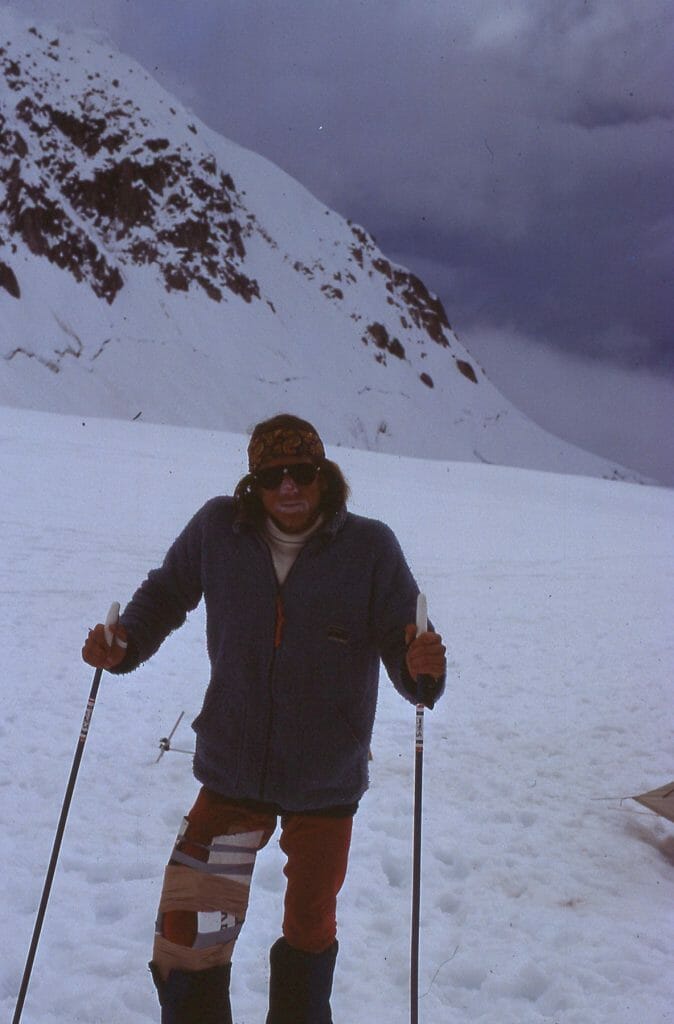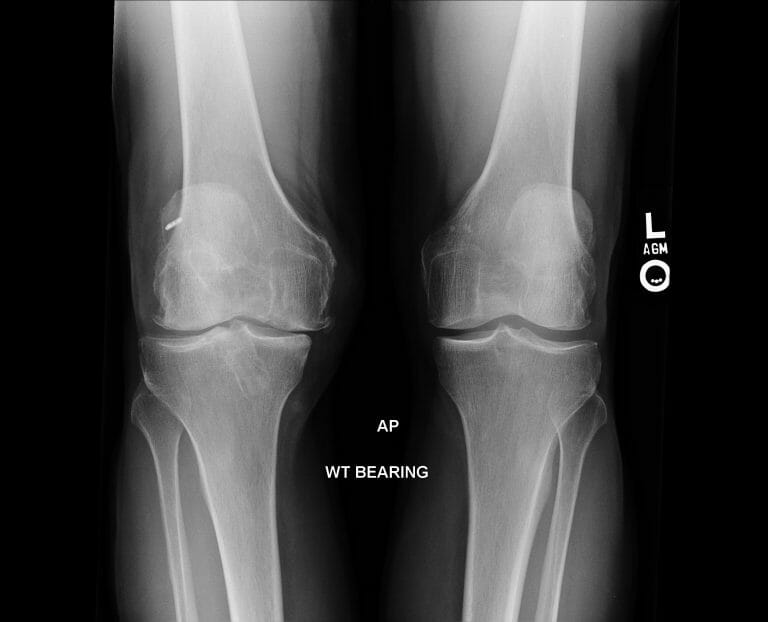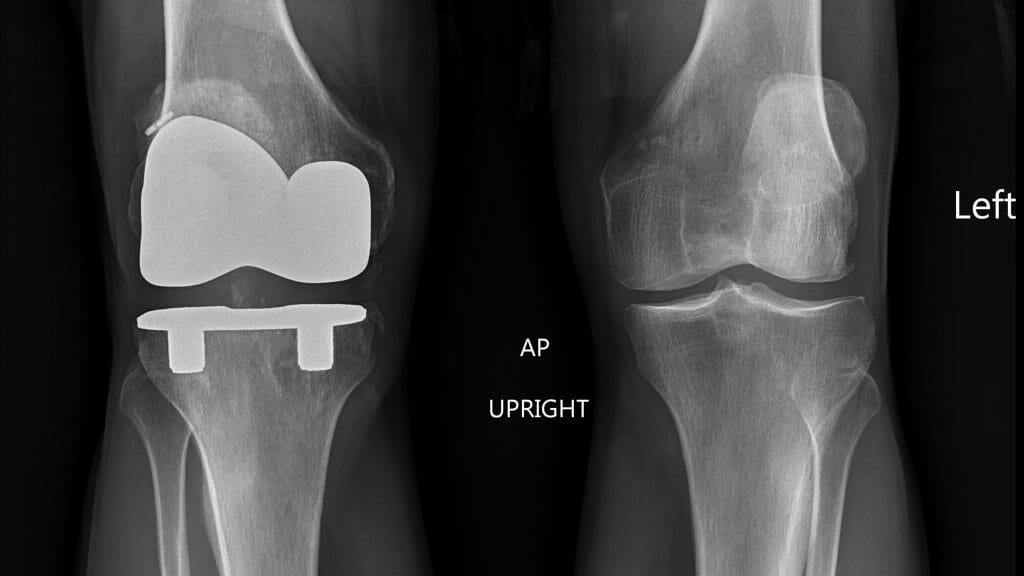This is the story of my incredibly positive, life-changing experience with a total knee replacement. As such, this article comes with a big caveat: It is not a substitute for medical advice. Its intention is only to show what is possible with a good surgeon, good prehab, and a lot of motivation. What I hope to share with others who are facing a similar choice is: Take heart. I thought my active mountain life was at an end, just like you may be thinking right now. Mine is a single data point, but it shows that running again after knee replacement surgery is possible. I hope it will inspire others who are in the same position I found myself in to take action.
My Little Drama
As I mentioned here, I am of a certain age where body parts start to wear out and break. After major injury to my right knee in 1978, I underwent seven knee surgeries at the world-famous Steadman Clinic in Vail, Colorado, over the ensuing 30-odd years. Each successive one was more of a patch job that barely allowed me to keep climbing, skinning, and—to a lesser and lesser extent—running. Each surgery bought me less time and less functional improvement. Finally, when that knee was bone-on-bone with the articular cartilage pretty much gone, Dr. Steadman told me there was nothing more he could do for me. He didn’t do knee replacements.
Things got really desperate for a couple of years when I could no longer ski or climb. Just getting up and down the belay platforms at the local sport crag was excruciating. And run? Only in my memories. At 60 I had to go down the frickin’ stairs sideways, one step at a time. I fell into a pretty deep despair. I was helping Steve with his training and also coaching some top ski racers but my own activity level dropped off a cliff. If I did anything very vigorous I’d need to spend a day on the couch icing my knee to get the swelling down so I could bend it. You are probably getting the full grim picture.

Scott Johnston looking pretty ragged at Kahiltna base camp, May 1978, awaiting a flight out from Jim Sharpe after crawling for two days. He's sporting one of the earliest, very stylish, Patagonia fleece sweaters.
The Light Bulb
Knee replacement?!? I couldn’t go there in my mind let alone do any serious investigation; I had heard the accepted wisdom that you’d never run again on an artificial knee. It seemed so final that I kept holding out hope for some miracle Steadman cure.
Then in 2012, I stumbled across a blog by Dick Beardsley, a former 2:08 marathoner most famed for his tie/win at the London Marathon in 1981 and his Duel in the Sun at the Boston Marathon in 1983 with Alberto Salazar, during which they nearly tied for the win and both ended up in an intensive care unit for days. So this guy knew how to suffer and loved to run. To my amazement, he was still running marathons as a 60-year-old with two artificial knees. And he ran on the road, which is way more punishing than the slow trail running I hoped to return to.
Those 10 minutes I spent reading about his experience changed my mind.
The next step was to find a surgeon who wouldn’t throw me out of the office when I said I wanted to run. I also wanted to ask some of my physical therapist acquaintances whom they’d recommend. After all, PTs see the results of the surgeon’s work. Who better to assess outcomes?
Heading into the Knee Replacement Surgery: Prehab
I selected my surgeon based on a PT recommendation, and in meeting with him I felt immediately that he got it. When I explained my previous hyperactive life to him and told him I wanted to return to that again—including running—he assured me that I would be able to. His exact words: “This is a 30-year knee. If you wear it out in 10 years, we’ll replace it.” With a date set, I went to work on the “prehab.”
This is a process I was already intimately familiar with from my multiple surgeries. It involves getting strong, especially in the injured leg, before surgery. I mean as strong as you can: lifting heavy weights, squats, deadlifts, single-leg stuff. Yes, it’s really painful and does more damage to that knee, but you’re about to get it replaced, so pound the Advil and get yourself to the gym. I’ve had excellent, relatively short recoveries from all my knee surgeries. These recoveries have amazed my PTs, but in each instance I’m convinced that going under the knife after a heavy strength prehab gave me a significant head start on post-surgery recovery.


Before and after total knee replacement. In the top photo one knee joint is clearly degraded to bone-on-bone. In the bottom photo bright and shiny steel holds the new joints.
First Two Weeks
Knee replacement surgery is a major trauma for your body. You may be unconscious but the invasive insult will have a deep impact on your body and your subconscious and can’t be ignored. Rest is critical to the healing process, to allow your tissues to get over the stress of the trauma. Due to blood loss you feel pretty weak and tire easily for a week or two after the surgery. You’re on painkillers for a while with all their unpleasant side effects; I weaned myself off them as soon as possible.
Next Few Months
After those first two weeks, I began riding my bike and doing short (1-mile) hikes. I was initially quite wary of abusing my new knee and was slow to add much impact, but my confidence grew over the following months.
Within three months I was doing some easy uphill trail runs where I pushed my bike and then rode back down. This is a technique I’d perfected before my surgery when my knee was too trashed to even walk downhill. In another few months I left the bike at home and ran up and walked back down. Shortly after this I began to insert 100-to-200-meter easy runs (jogs, really) on the flats when the opportunity presented itself during my trail run/hikes. Within a year I started to develop enough strength to jog along short downhill sections. During each phase of increasing load, I was super attuned to how my knee responded. To my amazement, the only issues I could feel were related to muscle weakness in that leg. I’d favored it for so long that I had to develop the single-leg stability that is necessary for running all over again.
Throughout this ramp-up in activity, I was engaged in a gym strength training program focused on single-leg strength and stability. What I found was that the uphill and downhill hiking and running were producing their own strength training effect, such that they impacted my gym strength work and vice versa. It was surprisingly easy for me to overdo this strength work and need to take a rest.
The Verdit
At 65 years old and almost five years out from my total knee replacement, I am still making gains. I run about 30 miles a week on trails in the spring through fall. In the winter I can cross-country and backcountry ski to my heart’s content. My climbing is nowhere near its previous level, but I chalk that up to age, limited time, and lower risk tolerance (age again), not my knee.
My legs still get more tired, more easily, than I recall. This could be age or the knee thing. But I am much fitter and active than I was even a year ago and can see a lot of upside yet. The fitter and stronger I get, the more able I become, allowing me to push harder and see a greater training effect.
I visited my surgeon a few months ago just to see how my knee was holding up. Comparing X-rays taken during that appointment with X-rays taken shortly after my surgery showed identical joint spacing. He declared that the joint looks like new, and with a full knee exam he perceived no wear at all. On top of that I have about 120 degrees of flexion in that knee, which also keeps improving, allowing me to now get into a full squat. It seems his statement about this being a 30-year knee is holding true, even for my very high activity level.
My Takeaway
My takeaway from this whole experience is that I should have done this procedure three to five years earlier. Being younger increases the likelihood of a good outcome. Doing it while younger will prolong your active years, thus allowing you to enjoy the things you love doing while you can still do them. Sure, there is going to be a rough patch of a few months, but you’re probably already in a pretty rough patch. At least you will be making progress rather than watching your body slowly deteriorate.
For anyone dealing with severe joint pain and arthritis who has exhausted all other avenues, I recommend you seek out the best surgeon you can find who won’t throw you out of the office for asking about running. I did, and now I can run again.
This article was originally published by Scott Johnston.

